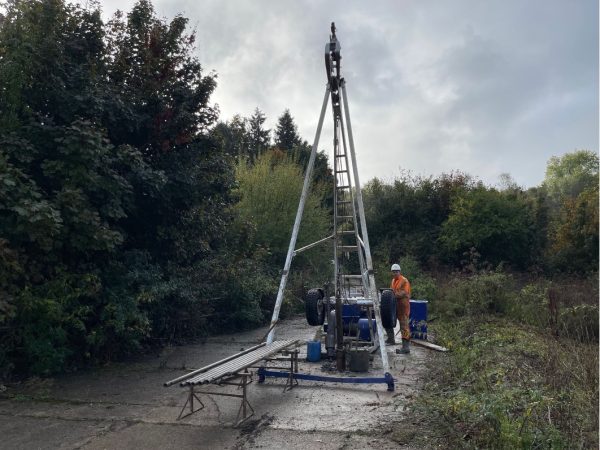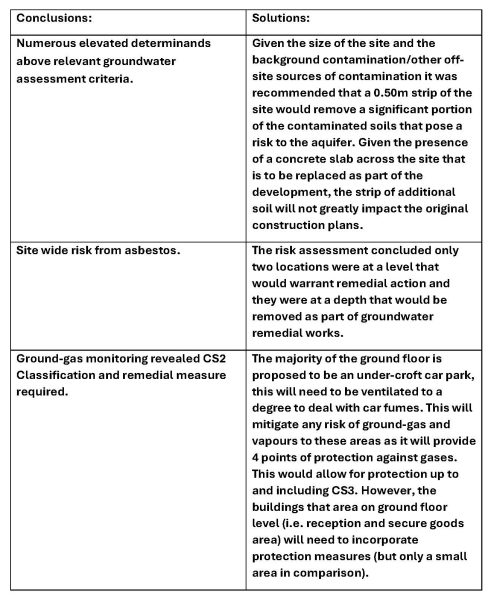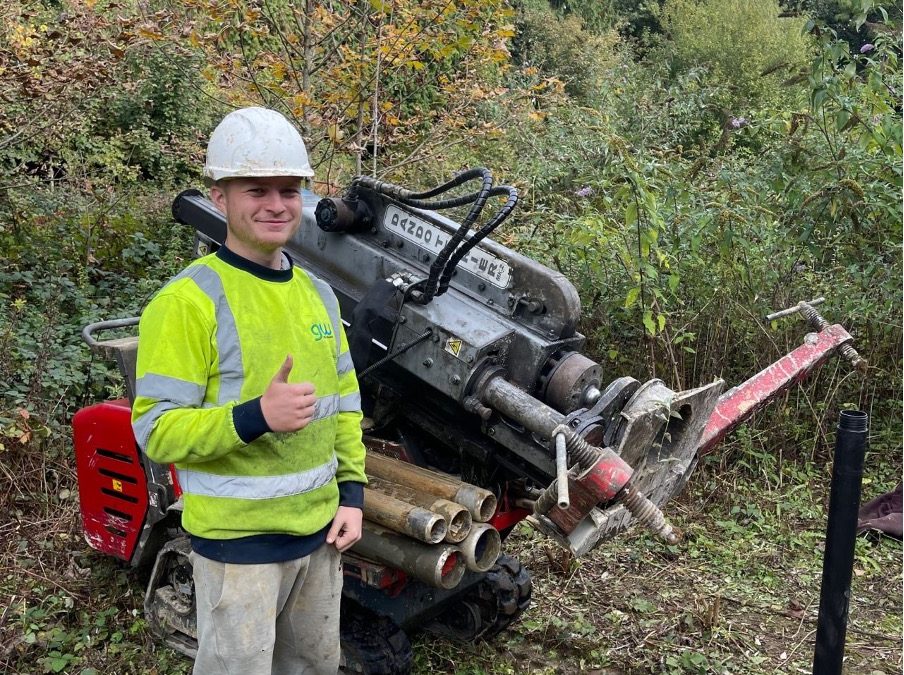Working proactively results in tricky site sign off
16th July 2024
Geoenvironmental • Geotechnical
Our Client

Preliminary-Assessment
Several sources of information were utilised to formulate the conceptual site model. This included reports that were available from neighbouring sites which helped establish a clear picture of potential background contamination in the area.
The desk study revealed the site had a number of potential on and off-site sources of contamination.
On-site:
- Potential for Made Ground (associated with historical construction/demolition)
- Historical Stream/Drain
- Depot
- Builder’s Yard
- Tanks
- Sewage Works
Off-site:
- Ground-gas Generating Features
- Various Industrial Uses
- Sewage Works
- Tanks
Our Challenge
The site comprised a commercial builder’s yard. Building materials were noted in the south of the site, with a two-storey building in the north. Hard standing car parking areas were noted in the north of the site.
The proposed development was understood to comprise the demolition of the existing building on-site and the construction of a five-storey industrial/manufacturing building with the ground floor predominantly used as a car park with visitor reception building in the north-west and a goods area.
The Ground & Water Approach
 Phase 2 Site Investigation
Phase 2 Site Investigation
The intrusive investigation comprised a combination of trial pitting, cable percussive techniques and window sampling. Soil samples were obtained and sent for a broad range of contaminants of concern. Due to the presence of the existing building during the site investigation the locations were evenly/randomly spread for coverage across the site with the building omitted. A selection of samples were also despatched for geotechnical testing purposes.
 The trial pitting allowed for coverage of the site as well as soakaway testing and the window sampling for the installation of combined groundwater and ground-gas monitoring wells as well as strength data. The cable percussion borehole assisted in pile design and installation of a monitoring well. Subsequent gas monitoring was undertaken to assess the gas risk from Made Ground on and off-site. One round of groundwater sampling was also undertaken to establish the risk to controlled waters. Ground & Water worked proactively with the client to establish how the remedial works could be combined with the foundations solution and construction process already planned.
The trial pitting allowed for coverage of the site as well as soakaway testing and the window sampling for the installation of combined groundwater and ground-gas monitoring wells as well as strength data. The cable percussion borehole assisted in pile design and installation of a monitoring well. Subsequent gas monitoring was undertaken to assess the gas risk from Made Ground on and off-site. One round of groundwater sampling was also undertaken to establish the risk to controlled waters. Ground & Water worked proactively with the client to establish how the remedial works could be combined with the foundations solution and construction process already planned.
